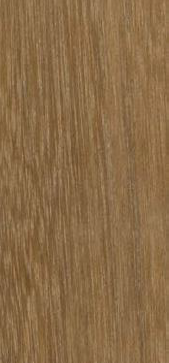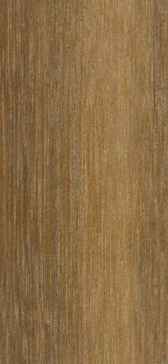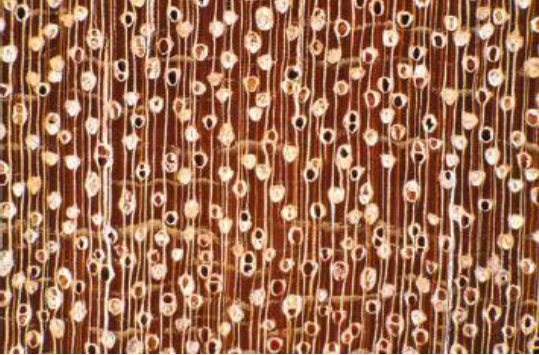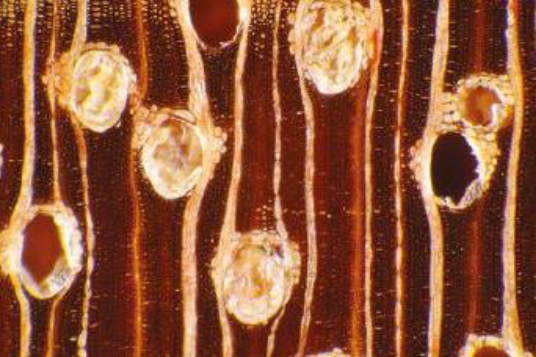IPE
| Family | Lauraceae |
| Botanical Names | Chlorocardium rodei. |
| Continent | Latin America |
| CITES | (Washington convention of 2017)
No trade Restrictions |
| Diameter | 80 to 100 cm |
| Thickness of Sapwood | 3 – 6 cm |
| Buoyancy | Does not float |
| Log Conservation | Good |
Wood Description
| Reference colour | Sapwood | Texture | Grain | Interlocked grain | Notes |
|---|---|---|---|---|---|
| Yellow brown | Slightly demarcated | Fine | Straight | Absent | Sapwood yellow brown to dark olive, with sometimes irregular darker veins. |
Flat Sawn

Quarter Sawn

Physical and Mechanical properties
| Property | Mean Value |
|---|---|
| Density* | 0.97 |
| Monnin hardness* | 19.8 |
| Coefficient of volumetric shrinkage | 0.36 % per % |
| Total tangential shrinkage (Ts) | 8.2 % |
| Total Radial shrinkage (Rs) | 7.5 % |
| T/R anisotropy ratio | 1.1 |
| Fibre Saturation point | 40 % |
| Thermal conductivity | 0.31 W/(m.K.) |
| Lower heating value | 20,420 kJ/kg |
| Crushing strength* | 98 MPa |
| Static bending strength* | 217 MPa |
| Longitudinal modulus elasticity* | 30,400 MPa |
Natural durability & Treatability
| Resistance to decay | Class 1 – Very durable |
| Resistance to dry wood borers | Class D – durable (sapwood demarcated, risk limited sapwood) |
| Resistance to termites | Class D – Durable |
| Treatability | Class 4 – non-treatable |
| Use class covered by natural durability | Class 4 - in ground or freshwater contact |
Notes
This species is listed in the NF EN 350 standard. This species naturally covers the use class 5 ( wood permanently or regularly submerged in salt water, sea water or brackish water) due to its high specific gravity and its hardness. According to the European standard NF EN 335 of May 2013, performance length might be modified by conditions in which it is used .
Preservation Treatment
| Against dry wood borer attacks. | This wood does not require any preservation treatment. |
| In case of temporary humidification | This wood does not require any preservation treatment. |
| In case of permanent humidification | This wood does not require any preservation treatment. |
Sawing and Machining
| Blunting effect | Fairly high |
| Tooth for sawing | Stellite tipped |
| Machining tools | Tungsten carbide |
| Suitability for peeling | Not recommended or without interest |
| Suitability for slicing | Not recommended or without interest |
Drying
| Drying rate | Slow |
| Risk of distortion | Slight risk |
| Risk of case hardening | No known specific risk |
| Risk of checking | Slight risk |
| Risk of collapse | No known specific risk |
| Suggested drying schedule | Schedule # 7 |
Assembling
| Nailing/ Screwing | Good but pre – boring necessary. |
| Notes | Very high specific gravity: important that gluing be performed in compliance with the code of practice and instructions for the glue used. |
Cross sections of Buchenavia fanshawei


Commercial Grading
Sawn timber appearance grading
According to NHLA grading rules (2015) Possible grading: FAS, Select, Common 1, Common 2, Common 3
Fire Safety
| Conventional French grading | Thickness > 14 mm: M3 (moderately inflammable)
Thickness < 14 mm: M4 (easily inflammable) |
| Euroclass grading | D-s2, d0
Default grading for solid wood that meets requirements of European standard NF EN 14081-1 (April 2016): structural graded timber in vertical uses and ceilings with minimal mean density of 0.35 and minimal thickness of 22 mm. |
Visual structure grading
According to European standard EN 1912 (2012) and associated national standards, strengths classes D50 and D70 can be provided by visual grading.
Main End uses
- Turned goods
- Heavy carpentary
- Ship building (planking and deck)
- Tool handles( resilient woods)
- Industrial or heavy flooring
- Decking
- Bridges (parts in contact with water or ground )
- Poles
- Cooperage
- Hydraulic works ( fresh water )
- Sleepers
Notes
Though infrequently used in France, Greenheart is one of the most suitable species for end used submerged in salt water, sea water or brackish water. Species is resistant to acids. Greenheart is also used for billiard cues